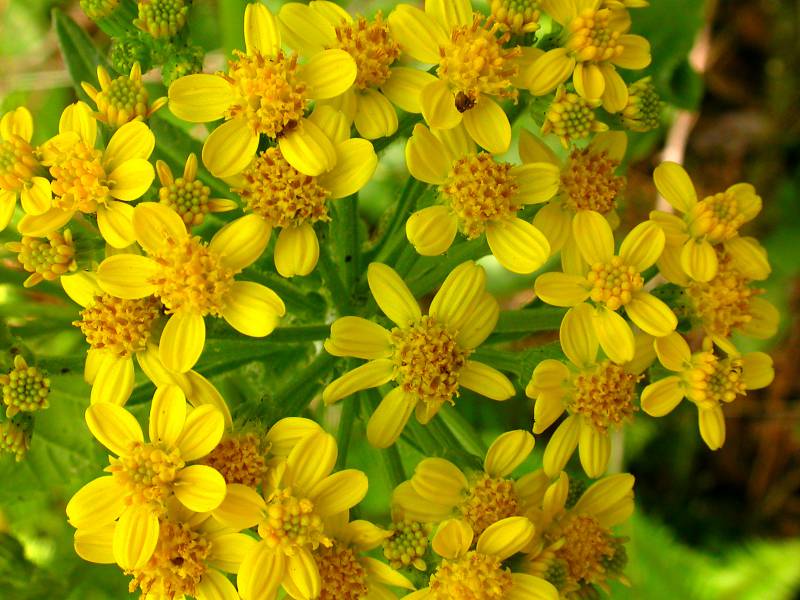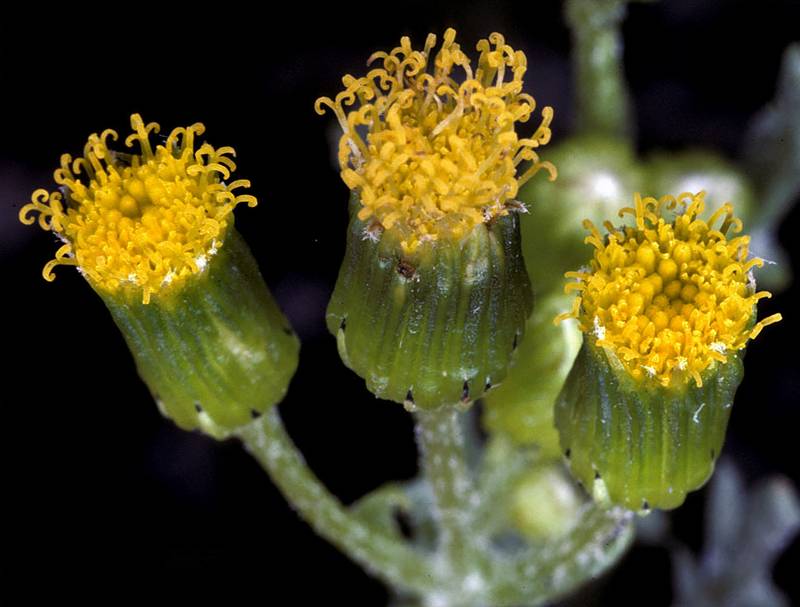Senecio integerrimus
Senecio vulgaris
one-stemmed butterweed, western groundsel
common groundsel, old man in the spring
Usually entire, elliptic to broadly lanceolate, the basal ones petiolate, the blade and petiole 6-25 cm. long and 1-6 cm wide;
cauline leaves progressively reduced upward, becoming sessile toward the top of the stem.
Leafy throughout, the leaves coarsely and irregularly toothed to pinnatifid, 2-10 cm. long and 5-45 mm. wide, the lower tapering to a petiole, the upper sessile and clasping.
Heads several to numerous in a rather congested inflorescence;
involucre 5-10 mm. long;
rays 6-15 mm. long, usually yellow, occasionally cream.
Heads many, strictly rayless, the flowers all tubular and perfect; disk usually 5-10 mm. wide;
involucre 5-8 mm. high, the princeple bracts about 21, the bracteoles short but well-developed, black tipped;
pappus copious.
Senecio integerrimus
Senecio vulgaris
- Local floras:
BC,
CA,
OR,
WA
- Local Web sites:
CalFlora,
CalPhotos,
Flora NW,
PNW Herbaria,
Turner Photog.
WildflowerSearch
iNaturalist (observations)
USDA Plants Database
- LBJ Wildflower Center
- SEINet
- Plants of the World Online
- Encyclopedia of Life
- Wikipedia
- Google Image Search
- Local floras:
BC,
CA,
OR,
WA
- Local Web sites:
CalFlora,
CalPhotos,
Flora NW,
PNW Herbaria,
Turner Photog.
WildflowerSearch
iNaturalist (observations)
USDA Plants Database
- LBJ Wildflower Center
- SEINet
- Plants of the World Online
- Encyclopedia of Life
- Wikipedia
- Google Image Search



